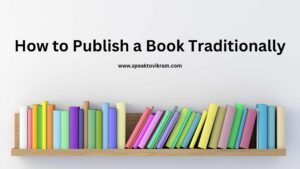The world of book publishing is evolving rapidly. In 2025, both traditional publishing houses and self-publishing platforms are operating in a landscape shaped by new technologies, changing reader expectations, and a greater emphasis on diverse voices and marketable content. Whether you’re seeking a traditional book deal or planning to self-publish, understanding what publishers look for in a manuscript can significantly increase your chances of success.
Here’s a comprehensive breakdown of what book publishers are prioritizing in 2025.
1. A Strong, Original Voice
Book publishers are inundated with submissions, so originality is critical. In 2025, publishers are looking for manuscripts that present a fresh perspective, a unique voice, and an engaging narrative. Whether you’re writing a romance, a fantasy epic, or literary fiction, your manuscript must stand out in tone, structure, or theme.
Tip: Avoid overused tropes unless you can subvert them in creative ways. Publishers want to feel like they’re reading something that hasn’t been done a hundred times before.
2. Market Awareness and Trend Relevance
Staying aligned with current market trends is more important than ever. Book publishers are keenly aware of what genres and topics are currently popular with readers. In 2025, “romantasy” (a blend of romance and fantasy), climate fiction, and diverse coming-of-age stories are in high demand. Trends like BookTok influence what gets published, so it’s wise to be aware of what’s trending on social media and online platforms.
Tip: You don’t have to chase every trend, but positioning your story in a way that resonates with current reader interests can give your manuscript a significant edge.
3. Diverse and Inclusive Storytelling
Representation continues to be a priority for traditional publishing and indie presses alike. Book publishers in 2025 are actively seeking manuscripts that authentically portray diverse characters, settings, and experiences—particularly from historically underrepresented communities.
Tip: Focus on authenticity. If you’re writing outside your lived experience, research thoroughly and consider sensitivity readers to ensure respectful and accurate representation.
4. Clear Target Audience
A common reason manuscripts are rejected is a lack of clarity about the intended reader. Book publishers want to see that you understand your target audience—whether it’s young adults, middle-grade readers, or adult sci-fi fans.
Tip: Make it easy for a publisher to visualize how your book fits into the marketplace. Compare your manuscript to existing successful titles without implying it’s a copy—use comparisons like “in the spirit of” or “for readers who love.”
5. Polished, Professional Presentation
First impressions matter. Whether you’re submitting to a traditional publishing house or preparing for self publishing, your manuscript should be as clean and professional as possible. This means careful formatting, error-free grammar, and a clear structure.
Tip: Consider hiring a professional editor before submitting or publishing. A polished manuscript shows that you take your craft seriously.
Also Read: Cross Promotion Book Marketing for Self Published Authors in India
6. Strong Author Platform
In today’s publishing industry, an author’s visibility and reach are increasingly important. Book publishers often look for writers who already have an established platform—such as a blog, podcast, or social media following. This is especially relevant in nonfiction, but it’s also a plus for fiction writers.
Tip: Start building your author brand early. Share insights about your writing process, engage with your audience, and grow your presence across social media platforms.
7. Marketability and Sales Potential
Publishers are businesses—they need to know your book will sell. Manuscripts with strong commercial potential—meaning a wide readership and good market placement—are more likely to be acquired. A well-crafted pitch, a snappy title, and a marketable concept go a long way.
Tip: Think like a marketer. How would you pitch your book in one sentence? What makes it memorable?
8. Sustainability and Future-Focused Themes
Environmental consciousness is shaping what publishers want. Stories that touch on sustainability, climate change, or eco-ethics are increasingly sought-after. Publishers are also making operational changes to reduce their carbon footprint, and some are favoring authors who reflect these values.
Tip: Subtle messaging can be powerful. Don’t preach—integrate eco-conscious elements naturally into your worldbuilding or themes.
9. Responsible Use of AI
With AI tools becoming more prevalent, publishers are taking a nuanced approach to AI-assisted writing. While some use of AI for brainstorming or editing is accepted, originality and creative ownership are non-negotiable. Book publishers are cautious about accepting manuscripts that appear overly dependent on generative AI.
Tip: Use AI as a tool—not a crutch. Your creativity, insight, and storytelling ability must remain at the forefront.
Final Thoughts: How to Impress Book Publishers in 2025
Whether you’re entering the traditional publishing route or taking the self publishing path, the fundamentals remain the same: tell a great story, present it professionally, and understand your audience. In 2025, book publishers want more than just a good manuscript—they want a marketable, meaningful, and timely project from a writer who understands the business of books.
Also Read: Traditional Publishing vs. Self-Publishing: Which is Right for You?
Pro Tip: Stay informed by following industry news, reading current bestsellers in your genre, and attending writing and publishing webinars. The more you know about what’s working in publishing today, the better you can position your manuscript for success.
Written by: Vikram Singh Thakur



